New electrical contractors enter our markets every year; these individuals perform work that electrical inspectors ultimately review. Involvement in activities in which these individuals participate, using the opportunities to educate, is getting to the grassroots of electrical safety. The IAEI West Virginia recognized an opportunity to be a leader in safety through involvement with the Skills-USA program in their state. Jack Jamison and a host of other key individuals worked hard to create a program that would challenge and educate the best of the best in West Virginia. Jack and his supporters successfully set the bar for the quality of electrical contractor that our markets demand. This team was working directly with students and their educators and helped to shape the mindset of the type of entry level contractor our industries need. This was an opportunity to drive the importance of workmanship and code-compliance that these individuals will take with them into the field.

Figure 1. Volunteers who served as judges
SkillsUSA Overview
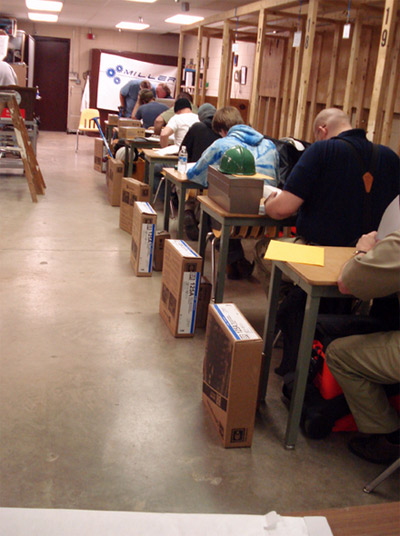
Photo 1. Students Take Written Exam. Each student was required to take a written exam before demonstrating their hands-on skills.
SkillsUSA is a national organization for students in trade, industrial, technical and health occupations education (www.SKillsUSA.org). This organization sponsors a SkillsUSA Championship annual event that recognizes achievements of career and technical education students. The program is commendable in that it encourages students to strive for excellence and take pride in their chosen occupations. In addition, it engages the educators of our future trade professionals to help them tweak their programs to better prepare their students for employment. Each technical school in West Virginia had an opportunity to participate. Those that participated sent their best student for the categories in which they have interest. West Virginia sent 21 students for the Residential Wiring challenge and 9 students for the Industrial Motor Controls competition. These events occur all over the United States.
The contests for the students are designed to test the skills needed for a successful entry-level individual in their occupational field. They are created and planned by technical committees made up of representatives of labor and management. Safety practices and procedures represent a portion of the contestant’s score that judges give to each student for both a written exam and practical hands on installation skills.
SkillsUSA touches on a wide array of occupations. IAEI West Virginia sponsored the residential wiring and industrial motor controls portions of this event. The purpose of the industrial motor controls program is to evaluate each contestant’s preparation for employment and to recognize outstanding students for excellence and professionalism in the field of industrial motor controls. The SkillsUSA industrial motor controls contest is defined by manufacturer and customer specifications, industry practice, federal regulations and industry standards such as theNational Electrical Code(NEC). The contest is divided into three parts: written, oral interview, and a series of testing stations. The program is designed to demonstrate knowledge of manufacturer and consumer specifications, industry practices, federal regulations and industry standards as well as the ability to apply this knowledge and manual proficiency in applying and installing electrical wiring methods and equipment.
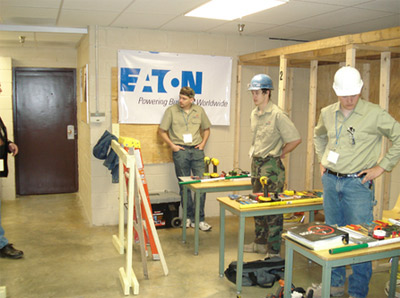
Photo 2. Students Arrive Prepared. Each student that participated in the Residential Wiring or Motor Control portions of the program had a cubicle with a desk where they arranged their tools. Safety was a key aspect and each student was reviewed for clothing which included eye protection, hard hats and proper clothing.
The purpose of the residential wiring section is to evaluate each contestant’s preparation for employment and to recognize outstanding students for excellence and professionalism in the field of residential wiring. The contest assesses the ability of the student to perform jobs or skills selected from a list of competencies as determined by the SkillsUSA Championship technical committee. There is a written knowledge exam and a skills performance contest. The skills portion of the contest includes a series of workstations that have information and instruction sheets for wiring a residence or completing a light commercial installation. West Virginia focused on a residential installation.
The winners of this year’s program will represent West Virginia at the national competition in Kansas City, Missouri.
IAEI West Virginia Involvement
Jack Jamison, secretary for IAEI West Virginia, Jim Williams and Paul Linger teamed up to spearhead this event. These individuals had a long row to hoe, so to speak, in pulling together the resources to make this event happen. Their first order of business was to get the volunteers needed. Together, with the help of these other key individuals, they made this program quite a success. Volunteers received the support of their organizations to support this event (see figure 1).
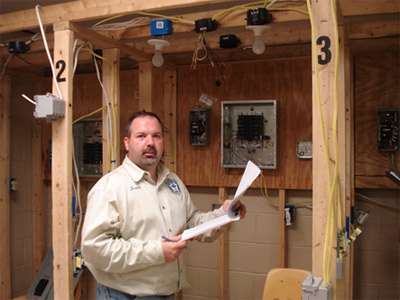
Photo 3. Judges. After the students completed the practical installation portion of testing, volunteer judges reviewed and scored each student’s work. Scott Jolliff reviews the Gold Medalist’s work.
The electrical program was started from scratch for the state of West Virginia. Jack and his team were faced with organizing volunteers to judge, managing logistical activities as well as creating the entire electrical program for both residential and motor controls. Efforts included development of exam materials, both written and practical installation plans, not to mention the product and equipment that was needed to implement the hands-on portion of the program. This team flexed their resources to assemble the product and resources needed to make this event happen. Local distributors, contractors and manufacturers played key roles in ensuring that the equipment they needed was delivered and in place. Key contributors for the event included:
-
Eaton Corporation
-
Legrand Pass & Seymour
- Allen-Bradley
- Hubbell
- Leviton
- Miller Engineering
- Lowe’s
- State Electric Supply company
- West Virginia Electric Supply Company
- The Hite Company
- CED Mosebach Electric Supply Company
The Program
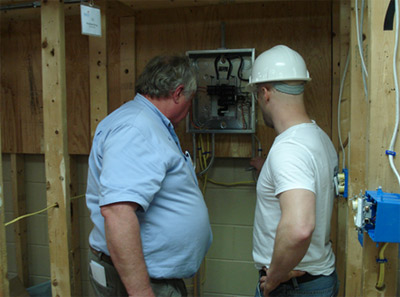
Photo 4. Learning Opportunity. Jack Jamison and other volunteers ensured this was more than a contest — it was a learning opportunity. Students would suffer the loss of points but in the end it is all about learning.
On March 26that 8:00 a.m., twenty-one residential wiring students secondary and post secondary and nine industrial motor control students sat at their desks to take a written exam (see photo 1). They had one hour to complete the written portion of the exam and then six hours to work on their practical installation skills through hands-on installation (see photo 2).
For the written exam portion of the challenge, the students sat at a desk to read and answer 34 multiple choice questions. Questions 1 through 30 directly pertained to theNational Electrical Code(NEC). Students were presented with problems that required them to reference theNECfor articles and sections to help choose the answer that best answered the question. For the Residential Wiring participants, everything from the 6-foot rule to box-fill calculations was covered. The last four questions focused directly on the hands-on portion of the challenge — the students had to draw the diagram that they would soon be building in their lab area.
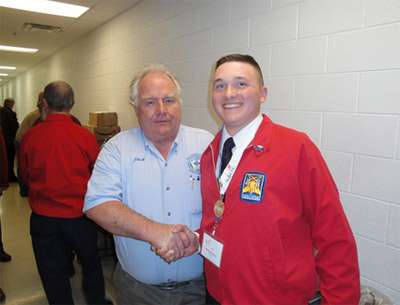
Photo 5. Residential Gold Medal. Jack Jamison proudly shakes the hand of the Gold Medalist for the residential wiring section of SkillsUSA WV.
Jack Jamison and his team of industry professionals made sure that the participating students were challenged but most importantly learned something (see photo 3). It was quite clear, once the hands-on portion of the program began, who was prepared and who was not for this competition. Because of the competitive environment, Jack and his team had no knowledge of who the students were, what their names were, or what schools they represented. In addition, helping students who stumbled during their tasks had to be compensated for through point deductions. When a student did ask for help, the advice and education they received were well worth the point penalties — the room was packed with industry experience. Passing on knowledge to those who will be entering into our markets, wiring our homes and/or commercial and industrial facilities, does a lot for safety.
The Challenge to Other Chapters
Getting involved with events like this and our newest electrical contractors just may open your eyes to how important it is that we as an industry get even more involved with students of electricity. IAEI and other trade organizations such as the International Brotherhood of Electrical Workers (IBEW) and the Independent Electrical Contractors Association (IEC) and others have great programs to cultivate and grow the knowledge of new and seasoned professionals in our markets. The involvement of these young individuals is a must. West Virginia IAEI demonstrated how this organization can get involved and has plotted a course for the future through this past program. Raising the awareness of IAEI educational programs to these individuals just entering our markets is a good opportunity to educate on safety and to grow membership.
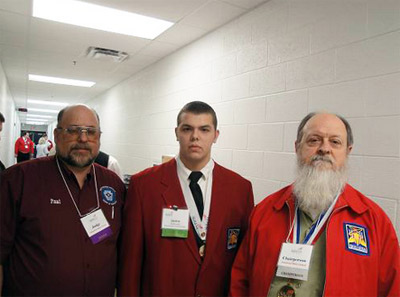
Photo 6. Motor Control Gold Medal. Paul Linger and Jim Williams proudly present the Gold Medalist for the motor control section of SkillsUSA WV.
It takes leadership to rally the troops, set the direction, and impact a life or possibly more by getting involved with the future of our industry. This involvement and leadership builds the brand of both organization and the individual — it helps to drive membership of the right demographics. Involvement of the young budding professional entering the market is what most nonprofit organizations lack. This is key membership that drives the future of the organization. These students appreciate the types of opportunities presented by the SkillsUSA program — it gives them an opportunity to demonstrate their abilities and to build their resumes as they enter the job market. These students could be our future electrical inspectors, future chapter presidents, treasurers and secretaries who will make our chapters function and thrive. I am proud to be a IAEI West Virginia member and was even more so during this event. These types of events occur in many chapters and more than likely never get mention or recognition. Those chapters should be commended for their efforts and others should be encouraged to get yet more involved. Together we can make a difference.
As always, keep safety at the top of your list and ensure you and those around you live to see another day. If you have any tips or ideas you would like to share, please feel free to send them to me at thomasadomitrovich@eaton.com. I look forward to your input to these articles and guidance for future articles.








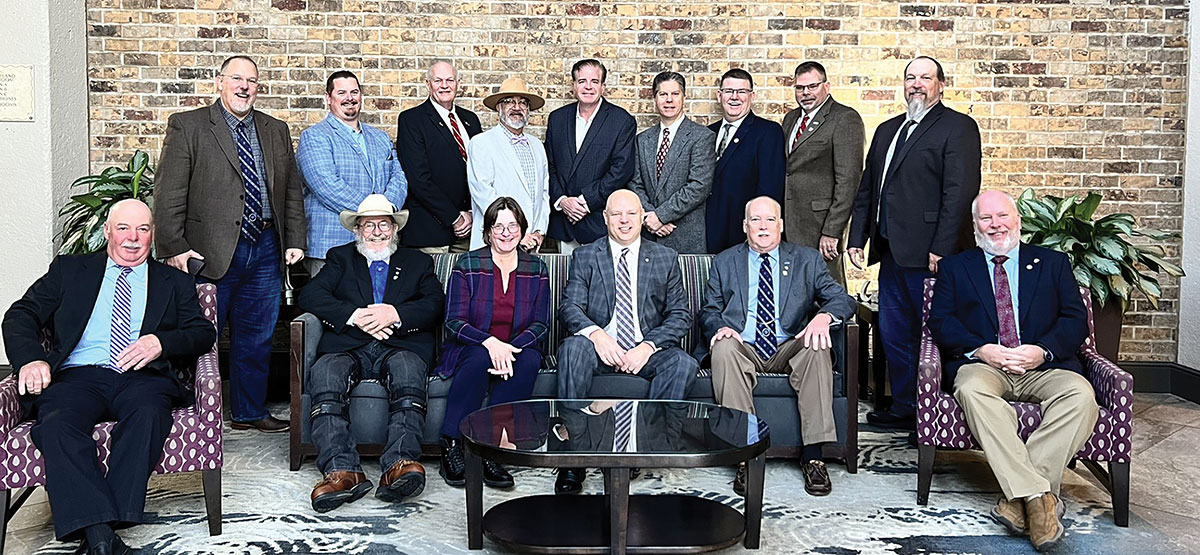

Find Us on Socials